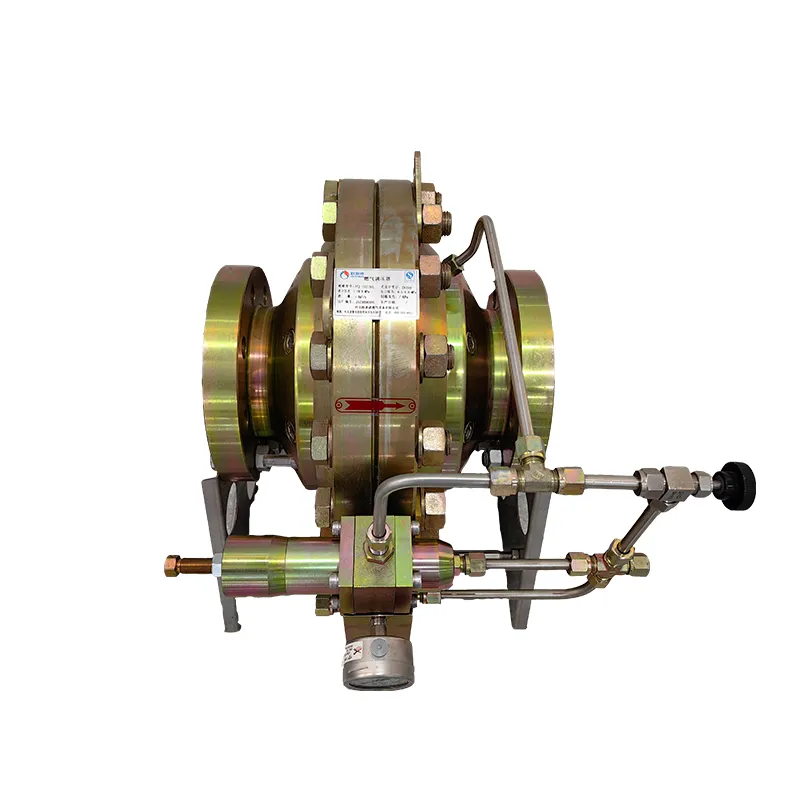
Dec . 21, 2024 07:23
Back to list
Natural Gas Pressure Regulation System Overview and Benefits
Understanding Natural Gas Pressure Regulators An Essential Component in Gas Distribution
Natural gas is a crucial energy source that powers homes, industries, and vehicles across the globe. To ensure its safe and efficient delivery, it is vital to control the pressure of the gas as it travels from producers to consumers. This is where natural gas pressure regulators come into play. These devices regulate the pressure of gas flowing through pipelines, ensuring that it remains at an optimal level for safe usage.
What is a Natural Gas Pressure Regulator?
A natural gas pressure regulator is a mechanical device that automatically controls the pressure of natural gas in a distribution system. By reducing high pressure from supply lines to a lower, more manageable level, regulators maintain an even flow of gas, preventing pressure surges that can damage appliances and pose safety hazards.
How Do Pressure Regulators Work?
Pressure regulators operate based on principles of mechanics and fluid dynamics. They are typically equipped with a diaphragm that responds to changes in pressure. When gas enters the regulator, it exerts pressure on the diaphragm, causing it to move. If the outgoing pressure exceeds the set level, the diaphragm adjusts the valve position to permit less gas flow, thereby reducing the pressure. Conversely, if the pressure drops, the diaphragm opens the valve wider to allow more gas to pass through. This automatic adjustment process is crucial for maintaining consistent pressure in the gas distribution system.
Types of Pressure Regulators
There are various types of natural gas pressure regulators, each designed for specific applications
1. Directional Regulators These regulators control gas flow in one direction and are often used in residential and commercial applications.
.
3. High-Pressure Regulators Used in industrial applications, high-pressure regulators manage gas at pressurized levels before it enters a system.
منظم ضغط الغاز الطبيعي

4. Low-Pressure Regulators Ideal for appliances that require low pressure, these regulators maintain a stable flow for heating or cooking.
Importance of Accurate Regulation
Accurate pressure regulation is vital for several reasons
- Safety Properly regulated pressure prevents hazardous conditions such as explosions or gas leaks. Too much pressure can damage pipelines and appliances, leading to potential failures.
- Efficiency Regulators help maintain optimal performance in gas appliances. When gas is delivered at the correct pressure, appliances operate more efficiently, thereby reducing energy waste and costs.
- Compliance Many regions have strict regulations governing the safe distribution of natural gas. Effective pressure regulation helps companies meet these standards, avoiding legal complications and ensuring public safety.
Maintenance of Gas Pressure Regulators
Like any mechanical device, pressure regulators require regular maintenance to ensure they function properly. Periodic inspections for leaks, wear and tear, and proper calibration are essential. Operators should check cartridge filters and replace them as necessary, as debris can impact performance and safety.
Conclusion
Natural gas pressure regulators play a significant role in the safe and efficient distribution of gas. They not only protect appliances and ensure consumer safety but also contribute to the overall efficiency of the natural gas infrastructure. As the demand for clean energy sources continues to grow, the importance of reliable gas pressure regulation cannot be overstated. Proper installation, maintenance, and operation of these regulators will further enhance the safety and reliability of natural gas use in homes and industries worldwide.
Next:
Latest news
-
Safety Valve Spring-Loaded Design Overpressure ProtectionNewsJul.25,2025
-
Precision Voltage Regulator AC5 Accuracy Grade PerformanceNewsJul.25,2025
-
Natural Gas Pressure Regulating Skid Industrial Pipeline ApplicationsNewsJul.25,2025
-
Natural Gas Filter Stainless Steel Mesh Element DesignNewsJul.25,2025
-
Gas Pressure Regulator Valve Direct-Acting Spring-Loaded DesignNewsJul.25,2025
-
Decompression Equipment Multi-Stage Heat Exchange System DesignNewsJul.25,2025

